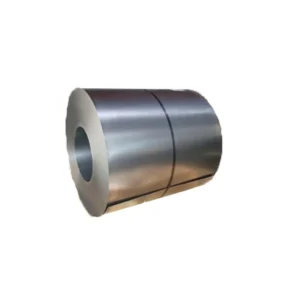Electrical Steel: Driving Efficiency and Innovation in Modern Power Systems
As global energy systems evolve to meet increasing demand and environmental goals, the materials that enable efficient energy generation, transmission, and utilization have become more critical than ever. Among these, electrical steel stands out as a cornerstone material that empowers the functionality of key components like transformers, electric motors, and generators.
Electrical steel, also known as silicon steel or lamination steel, is specially engineered to improve magnetic performance and reduce energy losses in electrical machines. In both Europe and the Middle East—regions investing heavily in smart grids, renewable energy, and electrification—electrical steel plays a pivotal role in enabling sustainable power infrastructure.
In this article, we delve into the characteristics, manufacturing, applications, and innovations in electrical steel, and explain why it is indispensable for the next generation of energy systems.
What Is Electrical Steel?
Electrical steel is a type of specialty steel designed to exhibit low core losses and high magnetic permeability. These properties make it ideal for use in components that rely on the efficient transformation or transfer of electromagnetic energy.
There are two main categories of electrical steel:
- Grain-Oriented Electrical Steel (GOES):
Designed for applications like transformers, where magnetic fields consistently flow in a single direction. It offers exceptionally low core losses. - Non-Grain-Oriented Electrical Steel (NGOES):
Used in motors and generators where the direction of the magnetic field changes frequently. It provides isotropic magnetic performance.
Electrical steel typically contains 1.5–3.5% silicon, which enhances electrical resistivity and reduces magnetic hysteresis losses. The choice between GOES and NGOES depends on the application’s magnetic directionality and efficiency requirements.
Properties of Electrical Steel
The unique value of electrical steel lies in its optimized magnetic and electrical properties:
- Low Core Loss: Reduces energy wasted as heat during magnetization cycles.
- High Magnetic Permeability: Allows for the efficient transfer of magnetic energy.
- Low Coercivity: Ensures less energy is needed to magnetize and demagnetize the steel.
- Excellent Surface Insulation: Special coatings minimize eddy current losses between layers.
- Mechanical Stability: Maintains performance under mechanical and thermal stress.
These attributes make electrical steel the material of choice for high-efficiency electrical machines and grid components.
How Electrical Steel Is Produced
The production of electrical steel involves a series of advanced metallurgical and thermal treatments to tailor its microstructure and magnetic behavior:
- Hot Rolling: Steel slabs are rolled to intermediate thickness under high temperatures.
- Pickling: Removes surface scale and impurities.
- Cold Rolling: Reduces the thickness to the desired gauge and begins to align grains (in the case of GOES).
- Annealing: Heat treatment to improve magnetic properties and remove internal stresses.
- Decarburization: Removes carbon to improve magnetic softness and avoid aging effects.
- Coating: Applies an insulating coating to reduce interlaminar eddy currents.
- Secondary Recrystallization (for GOES): Produces the desired Goss grain orientation to align magnetic domains efficiently.
Modern mills also utilize technologies like laser scribing, domain refinement, and AI-based process control to enhance uniformity and minimize core losses further.
Applications of Electrical Steel
Electrical steel is fundamental to a wide array of industries and technologies that rely on electromagnetic energy:
1. Power Transformers
Transformers rely on grain-oriented electrical steel to transfer energy with minimal losses. Low core loss helps reduce energy waste, improves thermal stability, and extends transformer lifespan.
2. Motors and Generators
Non-grain-oriented steel is used in motors for electric vehicles (EVs), HVAC systems, and industrial machines. It supports high efficiency, especially in variable-speed applications.
3. Renewable Energy Systems
Wind turbine generators, solar inverters, and energy storage systems all benefit from electrical steel’s efficiency. It ensures smooth power flow and reduces heat generation.
4. Smart Grid Equipment
As smart grid infrastructure grows in Europe and the Middle East, electrical steel is increasingly used in compact, high-efficiency transformers, inductors, and reactors.
5. Home Appliances and Consumer Electronics
Electric steel is found in washing machines, refrigerators, and compressors—contributing to better energy efficiency in household products.
Electrical Steel in Europe and the Middle East
Europe: Leading the Energy Transition
Europe is at the forefront of decarbonization and electrification. Electrical steel is enabling this shift in several ways:
- Smart Grid Rollouts: Replacing older, inefficient grid components with low-loss alternatives.
- EV Growth: Supporting high-efficiency motors in passenger and commercial vehicles.
- Eco-Design Regulations: Encouraging the use of materials that reduce lifecycle energy use.
Germany, France, and Nordic countries are increasing imports and local production of electrical steel to meet green technology demand.
Middle East: Powering Large-Scale Infrastructure
The Middle East is rapidly building energy-efficient infrastructure through mega-projects and diversification strategies:
- Urban Expansion: Modern cities like NEOM (Saudi Arabia) require vast amounts of low-loss transformers and grid components.
- Renewables Integration: Solar and wind energy projects need efficient electrical pathways.
- Oil & Gas Electrification: Upgrades to energy-intensive industrial processes now include high-efficiency motors made with NGOES.
In both regions, the strategic use of electrical steel is becoming central to policy and project planning.
Recent Innovations in Electrical Steel
Driven by the need for better performance and sustainability, the electrical steel industry is seeing rapid innovation:
- Thin-Gauge Laminations: Reduce core loss and increase energy density.
- High-Permeability Grades: Enable smaller, more efficient electrical machines.
- Low-Coating Resistance Surfaces: Improve heat dissipation and lower eddy current formation.
- Environmentally Friendly Coatings: Replace hazardous chemicals with water-based or biodegradable alternatives.
- AI-Enhanced Rolling Mills: Improve production accuracy and reduce material waste.
These advances make electrical steel even more attractive for next-generation applications in electric mobility, smart homes, and AI-powered industry.
Environmental Benefits and Circularity
Electrical steel contributes positively to global sustainability goals:
- Energy Saving: Reduces the overall energy consumed in transmission and device operation.
- Recyclability: Electrical steel can be recycled indefinitely without losing magnetic performance.
- Low Emission Production: New manufacturing technologies are reducing the carbon footprint of steel plants.
- Compliance: Most producers adhere to RoHS, REACH, and ISO 14001 standards.
This makes it a preferred material for ESG-conscious manufacturers and governments looking to reduce the environmental impact of their infrastructure.
The Market Outlook for Electrical Steel
The global electrical steel market is projected to surpass USD 50 billion by 2030, driven by:
- Electrification of transport
- Energy storage system expansion
- Transformer upgrades across power grids
- Industrial automation and robotics
- Green building and smart city developments
Europe and the Middle East are both poised for significant growth in electrical steel demand, making it a vital material for future-proof energy systems.
Conclusion
Electrical steel is more than just a component—it is a key enabler of global progress toward electrification, sustainability, and energy efficiency. Its unique magnetic properties allow modern electrical systems to operate with less energy loss, greater reliability, and improved performance.
As Europe invests in smart grids and green mobility, and the Middle East builds mega-cities and renewables infrastructure, electrical steel will remain essential to success. With ongoing technological innovation and growing environmental focus, the future of electrical steel is as bright as the grids it powers.




